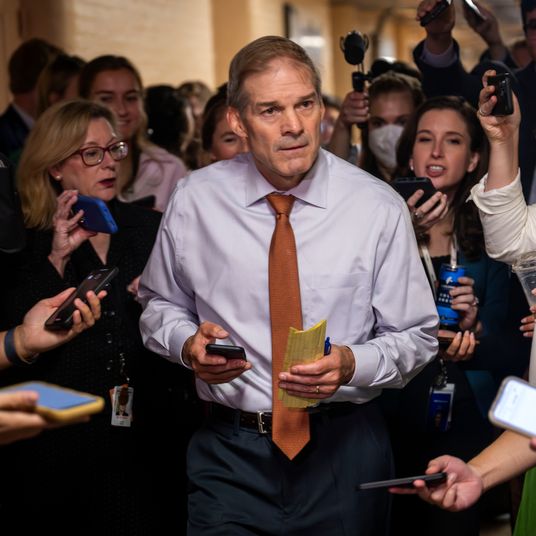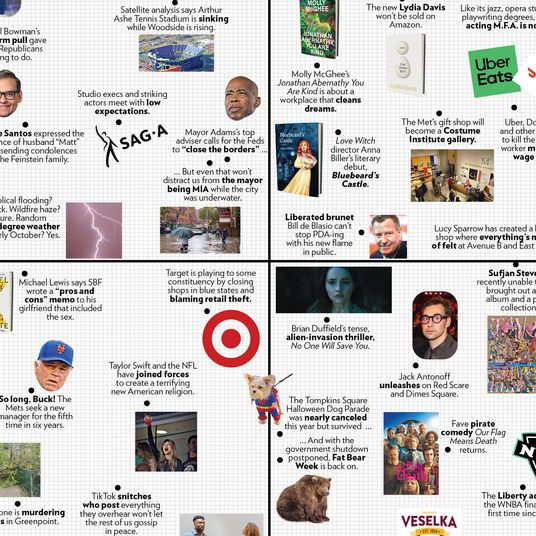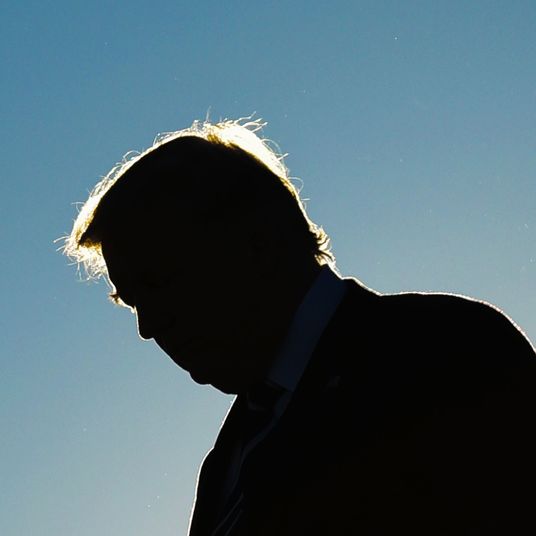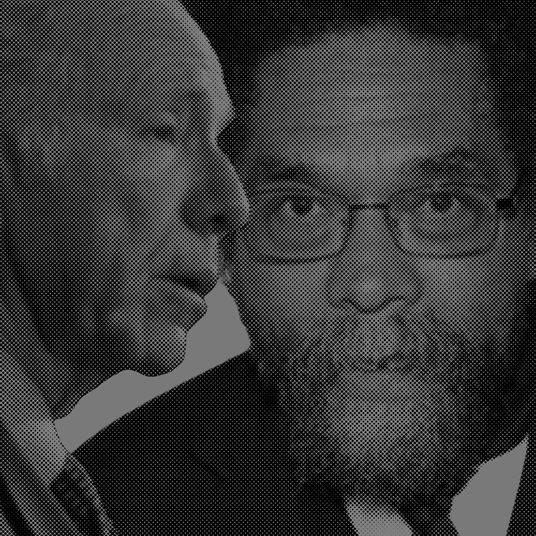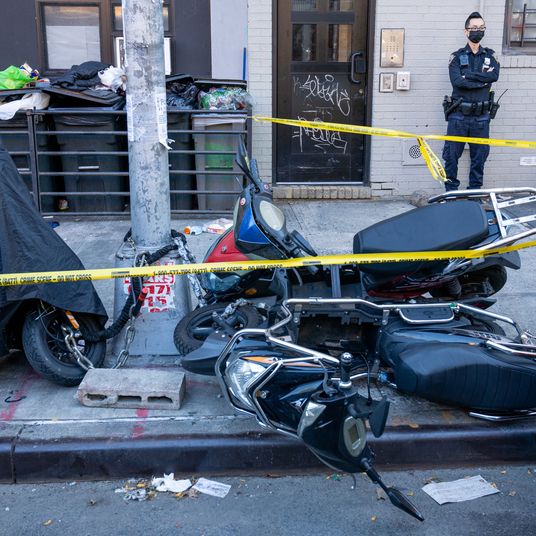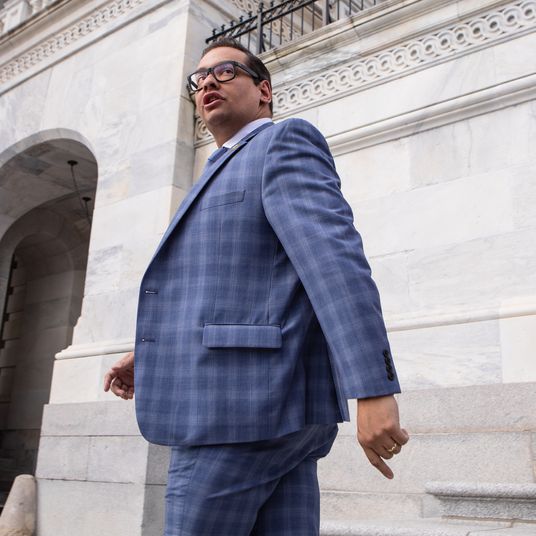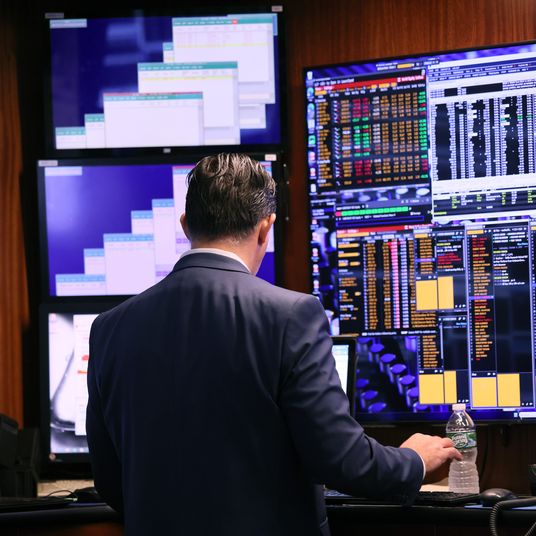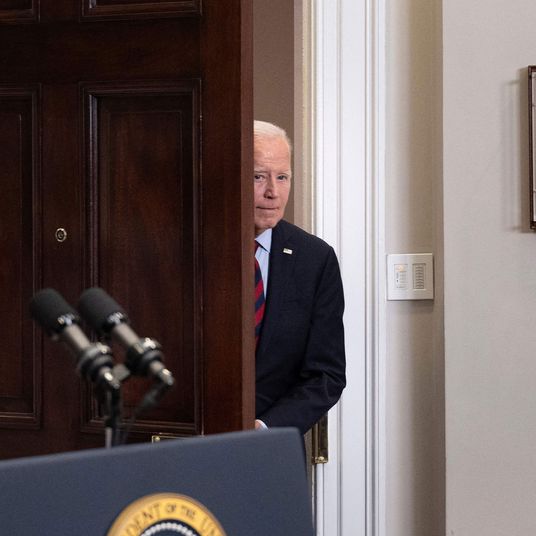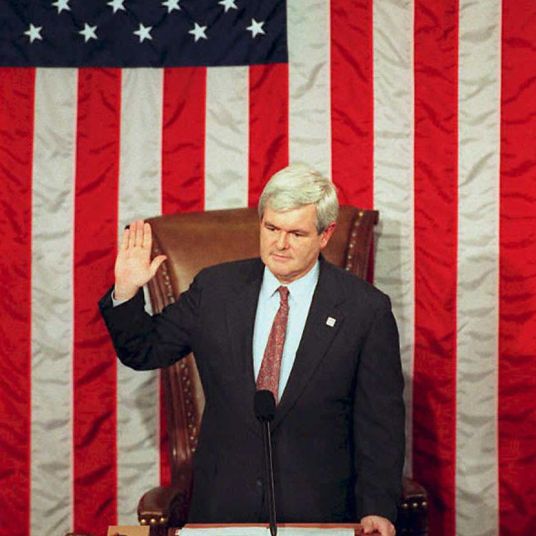In court, Sam Bankman-Fried looked thin. His suit was too big; the Wall Street Journal reported it was 40 percent off at Macy’s. His famous hair was cut short. He spent most of his time typing on a laptop.
The potential jury pool, filing in on Tuesday morning for what they would learn was likely a six-week trial, seemed to mostly know what this was all about. Many had heard of SBF or read about him. At least four people said they’d lost money in crypto or had family who did. One said his twin brother was nearly financially ruined. One woman questioned whether she could be impartial because her friend had hanged himself in 2010 after being caught up in a Ponzi scheme. “All I can think of is the Madoff cases,” said another. At one point, Judge Lewis Kaplan asked how many people had seen the 60 Minutes episode on Sunday in which Michael Lewis talks about his new (but not very good) book about SBF. At least six raised their hands.
Despite all that, the jury would be seated quickly on Wednesday around lunchtime and opening arguments would begin.
That Michael Lewis book arrives not just at the beginning of the trial but just as his reputation as a storyteller has taken a hit. A recent controversy around the motives of the family in The Blind Side — a movie based on his hit book of the same title — has only upped the stakes around the project. Lewis has framed his SBF book, Going Infinite, as a “letter to the jury,” the product of more than 100 interviews with SBF, which would presumably tell the story that everyone else has missed.
When it comes to the question of fraud, Lewis got closer than anyone to getting Bankman-Fried to admit that he’d knowingly done something wrong.
He demonstrates that SBF was at least aware that $9 billion had been siphoned off from his FTX customers and into his personal hedge fund — and that that created huge risks.
The year 2022 was bad for the crypto markets. After surging through the pandemic and into 2021, a sudden downturn led to two giant collapses in the crypto world, with long-running ripple effects.
At the time, FTX was one of the largest crypto exchanges in the world, and Alameda, Bankman-Fried’s hedge fund, had a reputation as being a top-tier fund. Bankman-Fried himself had offered to personally save ailing crypto lenders with his own money, leading CNBC’s talking heads to compare him to James Pierpont Morgan Sr., who swooped in to save the economy during the Panic of 1907.
It’s been clear for almost a year now that that was always a mirage. Alameda “borrowed” nearly $9 billion in customer accounts from FTX in order to stay solvent. When FTX started to collapse last year the improper relationship between the exchange and the hedge fund was revealed. But Bankman-Fried has always maintained it was a mistake — $8.8 billion that was mislabeled. The biggest accounting error in history maybe, but still just an oopsie.
Lewis is able to establish that Bankman-Fried knew about the borrowing and failed to do anything about it. About two months before everything collapsed, Caroline Ellison, the head of Alameda, had directly told another one of FTX’s co-founders, Nishad Singh, that she was worried that the risk of collapse was getting too great. According to Lewis, Singh then told SBF that an account of the borrowed money was getting too risky. In October, he investigated this himself — and came to see that the funds were at risk: “It was only then that he could see that Alameda had been operating as if the $8.8 billion in customers’ funds belonged to it. And by then it was too late to do anything about it.”
But Lewis is weirdly vague about SBF’s role in misallocating the funds.
How does such a large sum of money get quietly siphoned from one institution to another when both those firms are controlled by the same man? On this, Lewis is silent. On page 217, he first acknowledges that the “loan” happened, but only in a passive way:
“[FTX] had exempted Alameda …”
“For Alameda Research, however, an exception had been made …”
“Sam’s private trading firm was allowed to lose …”
Lewis does not say who authorized the loans, or who knew about it, or really even why they happened.
There is also no mention of the widely reported allegation that SBF’s lieutenant Gary Wang had programmed in a back door to allow Alameda to borrow unlimited amounts of money without setting off alarm bells — and had done so at SBF’s direction. This explosive claim has been around for nearly a year, but doesn’t even merit a mention in the book?
And Lewis wants us to wonder about a narrative that we expect in court: Did Ellison’s ex-boyfriend, Eric Mannes, bring down FTX?
Bankman-Fried’s relationship with Ellison is a central theme of Going Infinite. She is largely represented here through Bankman-Fried’s eyes, and in selected memos and reports that were made available to Lewis — a perspective that feels notably one-sided.
Not shockingly, she doesn’t come across particularly well. In one quoted document from 2018, she writes out the pros and cons about why she should have left Mannes, her former coworker and ex. (“He told me he would probably never love me” is one bullet point). She also wrote a memo to SBF where she laid out that not only did she have “pretty strong romantic feelings” toward her boss, but the thought of his disapproval was distracting and made her worse at her job. Lewis tries to make a kind of lover’s revenge storyline here — and finds a suggestive scenario, though not actual proof.
This sort of sketchiness and innuendo is the book’s method. Lewis tells a story about FTX’s grand proposed headquarters. It’s a relatively innocuous passage designed to paint a picture of a company with too much money making a monument to its founder’s ego. The new headquarters, on the Bahamian island of Nassau, would be shaped like an F and be in a location strategically designed so people would see it as their planes landed. Also, the side of it would be decorated in a way so it would look shaggy and unkempt, like Bankman-Fried’s notoriously unruly hair, Lewis says. He also reports that two young architects were tasked to design the building — one of whom had “never designed an office building” but was a close friend of SBF’s from high school.
I obtained pictures of the plans last year. The headquarter’s architectural plans dated November 4, 2022 — just days before the exchange collapsed — looked like this.
The first thing to notice is that this is not a building designed by two inexperienced architects. The firm at the top is a Bahamian firm. Underneath that is Gensler, the largest architecture firm in the world. There are four more architecture and consulting firms underneath that.
This also doesn’t seem to resemble an F, although, according to a person directly familiar with the plans, it is “abstracted” to look like one. This boils down to telling a client a story they want to hear. “You don’t design a building based off of a shape and cram the program into it. You do it the other way around,” said that person. The “hair” designs would have actually looked nothing like Bankman-Fried’s hair — they were vertical shading rovers, which are long and straight. “The idea was to do something tactful and sophisticated so that it looked good. It just would look like a building. If you wanted to attribute it to hair, it can be attributed to hair,” that person said.
Lewis’s choices are a warning. We have, during this trial, a very large number of people who are trying to make meaning from the details of SBF’s life. Not everything makes for an easy lesson.
Correction: An earlier version of this story incorrectly referred to Eric Mannes’ previous relationship to Caroline Ellison. He was her former coworker.








